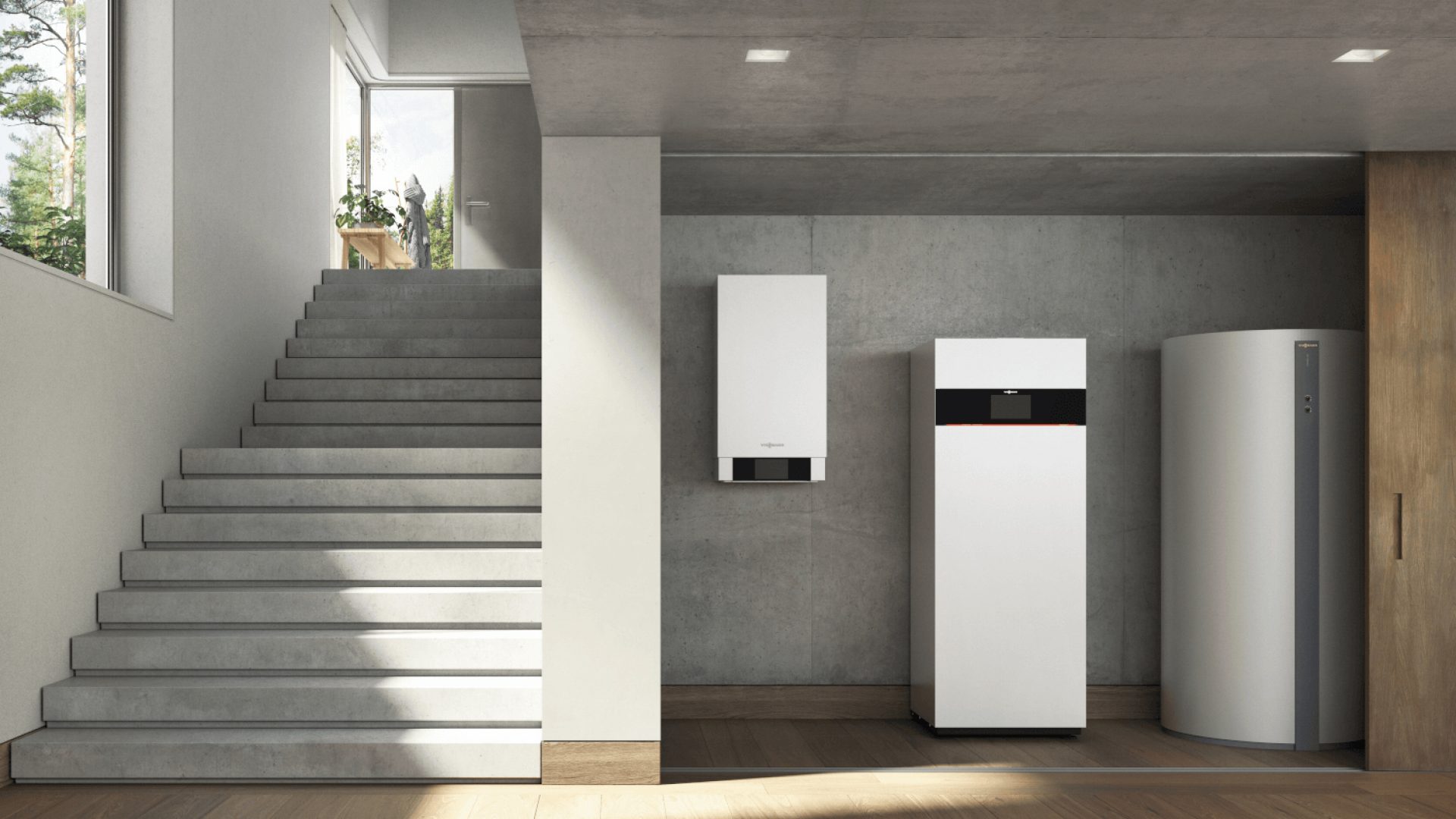Conventional heating systems work according to a clear principle: The used energy source is converted into heat. With cogeneration of heat and power, the heating system generates electricity in addition to heat. Very high efficiency rates of more than 90 % can be achieved with the simultaneous production of electricity and heat.
In addition to the high level of efficiency, which leads to reduced costs for the customer, they also have several other benefits. Considering the continuously rising prices of electricity, it is becoming increasingly attractive for many consumers to generate their own electricity, regardless of weather conditions.
- The potential fields of application of the CHP technology are huge:
- For single and two-family houses, there are so-called "micro-CHP systems", as well as fuel cell heating systems with an output range of up to approximately 2 kW of electrical power.
- In apartment houses, as well as in small and medium-sized commercial premises, "mini-CHP systems" with a power output up to 50 kWel are used.
- CHP systems with more than 50 kWel are also used in the industrial sector and for large residential complexes.
Micro-CHP and mini-CHP systems, as well as fuel cell heating systems, are generally operated in conjunction with a second heat generator for peak loads. The systems can be easily integrated into existing heating systems.
Fuel cell heating and hydrogen: Dream team for the heating revolution
At present, fuel cell heating systems are generally operated using natural gas, which is converted into hydrogen. In the future, green gases might also be used directly. In the fuel cell heating systems operated using natural gas, the natural gas is not burnt. Rather, an electrochemical reaction takes place, which enables significantly higher levels of efficiency compared to engine-based or combustion-based systems. In addition, CO2 emissions are significantly lower during the low-noise, low-vibration and low-maintenance operation.
Especially in typical single and two-family homes, there is huge potential for the technology, since natural gas heating systems already have a large market share in existing buildings. Currently, however, every one in two of these heating systems is outdated, which means that they are often no longer economical to operate. This results in an unnecessary burden for the wallet and the climate. Therefore, it is advisable to modernise the system, for example with a high-efficiency fuel cell heating system.
But in new buildings as well, there are opportunities for deploying fuel cell heating systems. In addition to compact heaters with integrated buffer storage, freely combinable kits consisting of the fuel cell, with integrated or supplemented heat generator and buffer storage are also possible. It also makes sense here to combine the system with a heat pump. Moreover, high capacity models are also available that are specifically designed for use in commercial or non-residential buildings.



